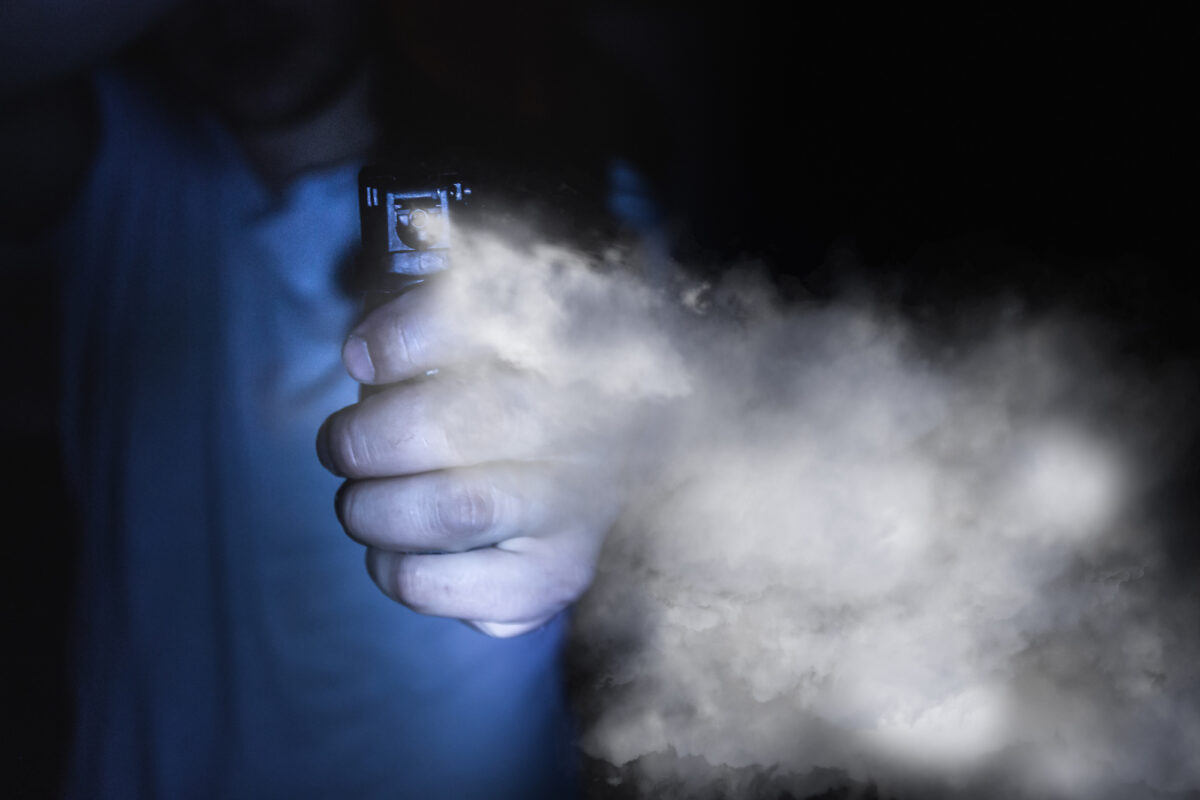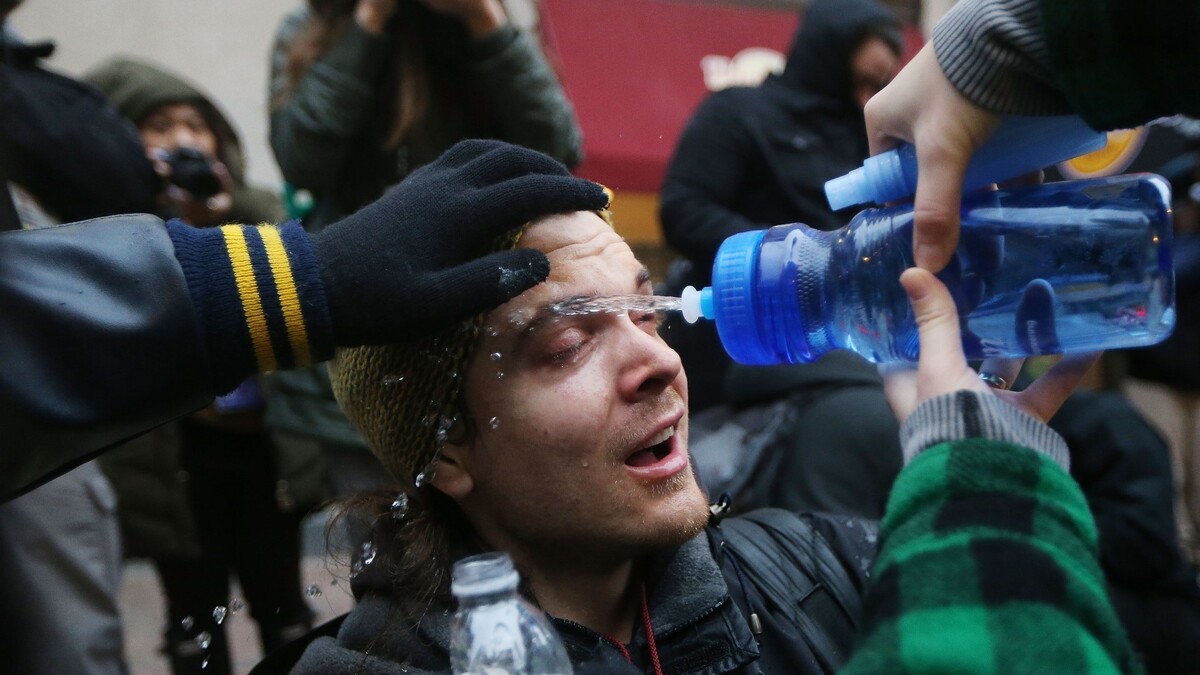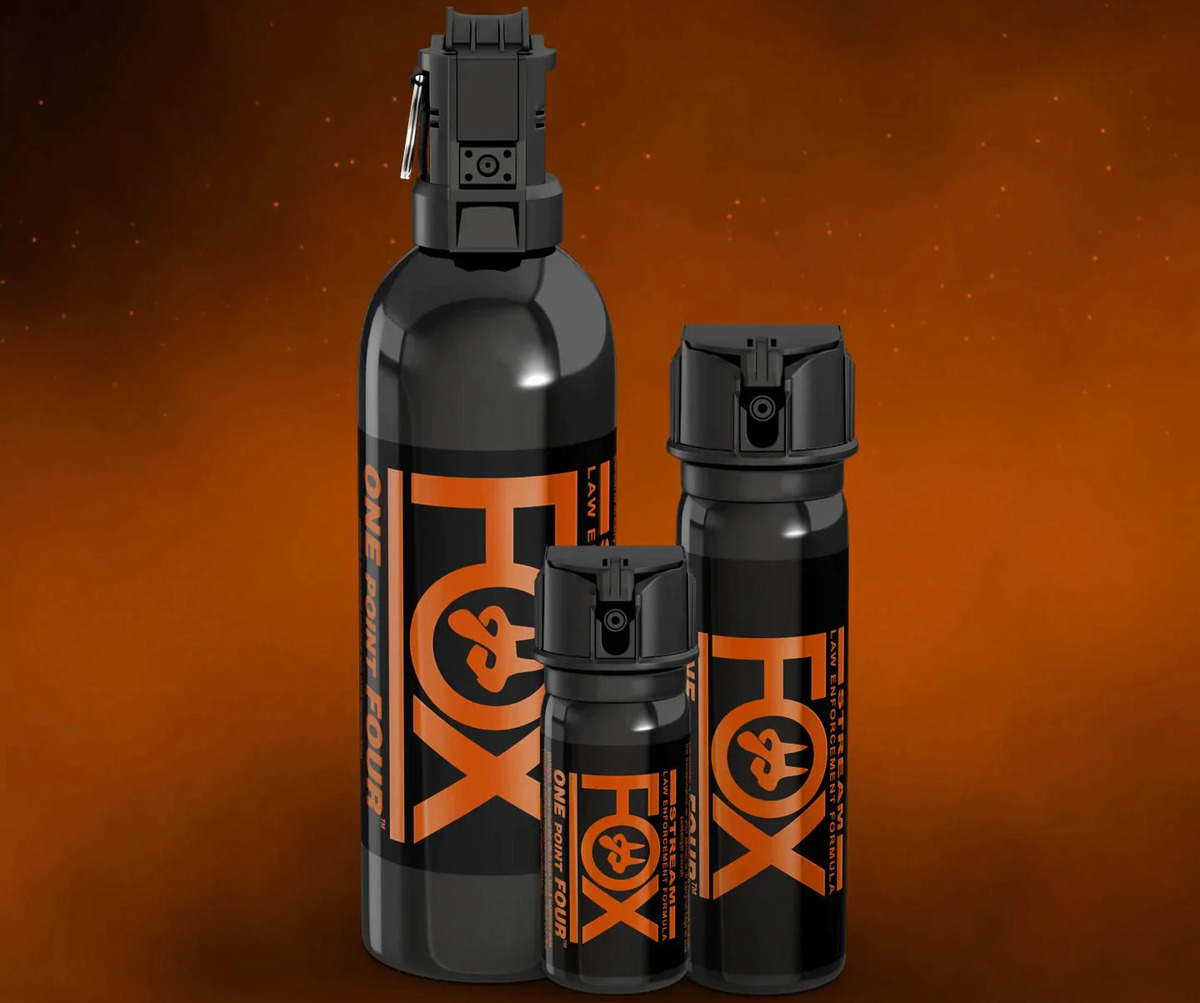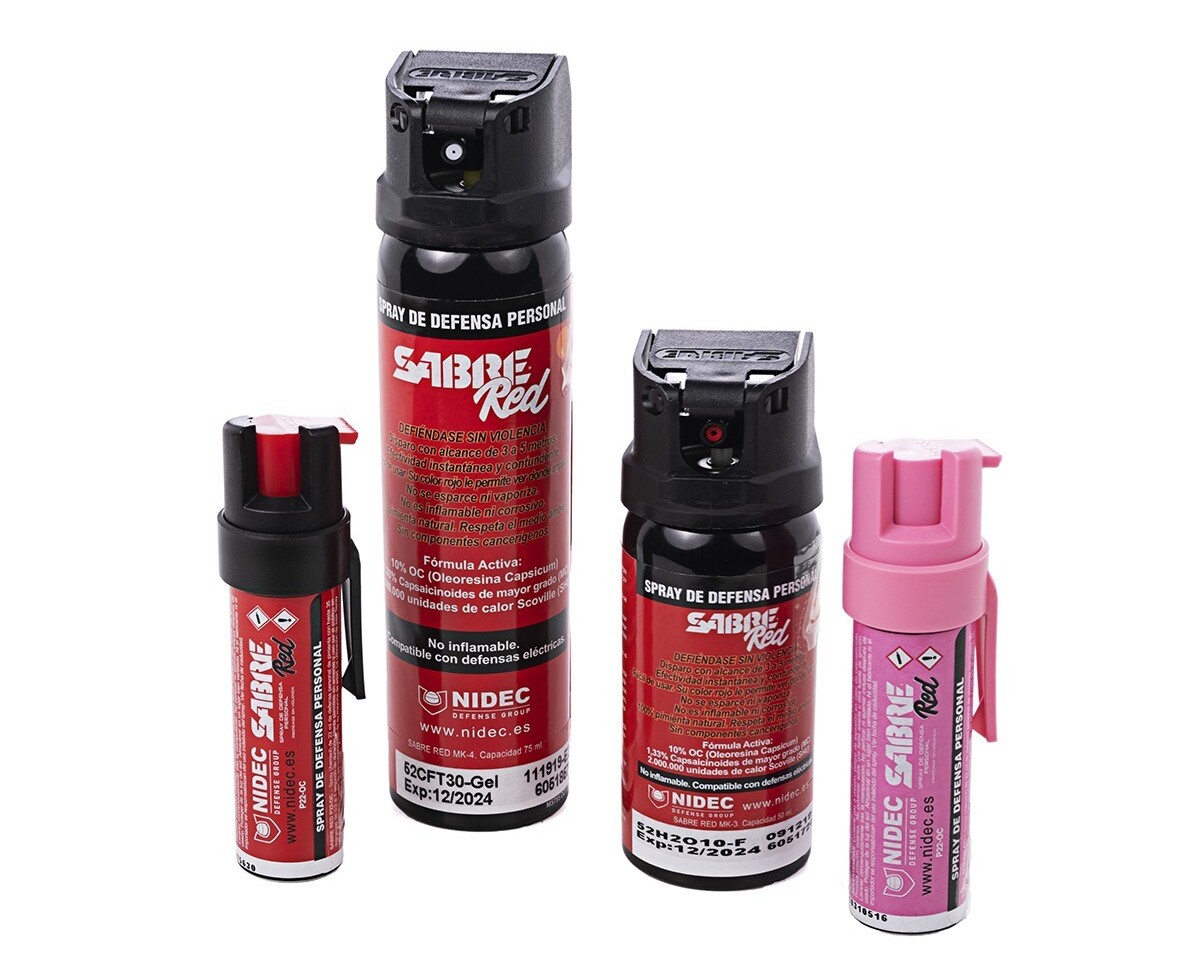Home>Home Security and Surveillance>Tear Gas Vs Pepper Spray: Which Is Worse


Home Security and Surveillance
Tear Gas Vs Pepper Spray: Which Is Worse
Modified: March 6, 2024
Discover which is more effective in home security and surveillance: tear gas or pepper spray. Make an informed choice to protect your loved ones.
(Many of the links in this article redirect to a specific reviewed product. Your purchase of these products through affiliate links helps to generate commission for Storables.com, at no extra cost. Learn more)
Introduction
Welcome to the world of home security and surveillance, where innovative technologies are constantly evolving to ensure the safety and protection of our homes. In today’s uncertain times, it’s crucial to have robust systems in place to safeguard our loved ones and belongings.
One key aspect of home security is the use of surveillance cameras, which allow homeowners to monitor their property remotely and deter potential intruders. However, it’s essential to understand that while surveillance footage can be a valuable tool, it is best used in combination with other security measures.
In this comprehensive guide, we’ll explore the various components of home security and surveillance systems, including cameras, alarms, and monitoring services. You’ll learn how to assess your specific security needs and choose the best options for your home. We’ll also discuss the importance of proper installation, ongoing maintenance, and integration with other security features.
Furthermore, we’ll dive into the world of smart home security, where cutting-edge technologies such as voice-activated controls and artificial intelligence-powered cameras provide advanced capabilities and convenience.
In addition to discussing the technical aspects of home security systems, we’ll also delve into the psychology of home security. Understanding the mindset of potential intruders can help you implement effective strategies to deter them, ensuring your home remains a safe and secure sanctuary.
Throughout this guide, we’ll provide practical tips, expert insights, and real-life examples to illustrate the importance of home security and surveillance. By the end, you’ll be equipped with the knowledge and tools necessary to create a comprehensive and effective home security plan.
So, let’s dive in and take the first steps toward ensuring the safety and peace of mind that come with a well-protected home.
Key Takeaways:
- Tear gas and pepper spray can cause immediate eye and respiratory irritation, skin inflammation, and psychological distress. Understanding their effects and legal considerations is crucial for responsible usage and personal safety.
- Home security and surveillance systems are essential for protecting loved ones and belongings. It’s important to assess specific security needs and choose the right measures, such as surveillance cameras, alarms, and smart home integration, for a comprehensive security plan.
Read more: What Is Bear Spray Vs Pepper Spray
Tear Gas: Composition and Effects
Tear gas is a commonly used crowd control agent and riot-control chemical. Its purpose is to disperse or incapacitate individuals by causing irritation and inflammation of the eyes, nose, and respiratory system. Tear gas is typically deployed by law enforcement agencies and military forces in various situations.
Chemical Composition of Tear Gas
Tear gas is not a single compound but rather a combination of chemicals that produce irritating effects. The most commonly used tear gas compounds include:
- Chlorobenzylidene malononitrile (CS gas): This is the most widely used tear gas compound. It is a crystalline powder that can be dispersed as a gas or dissolved in a liquid.
- O-Chlorobenzylidene malononitrile (CN gas): This compound was used extensively in the past but has been largely replaced by CS gas due to its higher toxicity.
- Pepper spray: While it is not categorized as tear gas, pepper spray is often used for similar purposes. It contains oleoresin capsicum (OC), a natural irritant derived from chili peppers.
Health Effects of Tear Gas Exposure
Exposure to tear gas can have several immediate and long-term health effects. The severity of these effects can vary depending on factors such as the concentration of the gas, duration of exposure, and individual susceptibility. Some of the common health effects include:
- Irritation of the eyes, nose, and throat: Tear gas causes immediate burning and stinging sensations in the eyes and irritation in the respiratory system. This can lead to excessive tearing, coughing, and difficulty breathing.
- Skin irritation: Direct contact with tear gas can cause skin redness, itching, and inflammation. It may also lead to skin burns in severe cases.
- Respiratory problems: Prolonged exposure to tear gas or a high concentration of the gas can trigger severe respiratory distress, including asthma attacks and bronchospasm.
- Psychological effects: Tear gas exposure can cause fear, panic, and anxiety, leading to psychological trauma in some individuals.
Short-term Effects of Tear Gas
Within minutes of exposure to tear gas, individuals may experience immediate effects such as intense eye and nose irritation, coughing, and difficulty breathing. These symptoms usually subside once the person moves away from the gas or is provided with fresh air.
However, in some cases, individuals with pre-existing respiratory conditions, such as asthma or chronic bronchitis, may experience more severe and prolonged respiratory distress. There have also been rare reports of severe allergic reactions and hypersensitivity reactions in some individuals exposed to tear gas.
Read more: What Is Mace Vs Pepper Spray?
Long-term Effects of Tear Gas
Long-term effects of tear gas exposure are still a topic of ongoing research, and more studies are needed for a comprehensive understanding. However, several long-term health implications have been reported in individuals exposed to tear gas repeatedly or over extended periods of time.
Some potential long-term effects include the development or exacerbation of respiratory conditions, such as asthma, chronic bronchitis, and even lung fibrosis with prolonged exposure. Additionally, skin reactions can lead to dermatitis and other skin problems in some individuals.
It’s important to note that the effects of tear gas exposure can vary from person to person. People with underlying health conditions, such as respiratory or cardiovascular problems, are generally more susceptible to the adverse effects of tear gas.
In the next section, we will explore the composition and effects of pepper spray, another commonly used self-defense and law enforcement tool.
Pepper Spray: Composition and Effects
Pepper spray, also known as oleoresin capsicum (OC) spray, is a popular self-defense tool used to incapacitate individuals by causing temporary blindness, difficulty breathing, and intense pain. It is widely used by law enforcement agencies and civilians for personal protection.
Chemical Composition of Pepper Spray
The primary active ingredient in pepper spray is oleoresin capsicum, which is derived from various chili pepper plants. Capsaicin, the chemical responsible for the spicy heat in peppers, is the main irritant component in pepper spray. The concentration of capsaicin in pepper spray can vary, ranging from around 0.18% to 3%. Other inert ingredients, such as propylene glycol and water, are typically added to create a sprayable solution.
Health Effects of Pepper Spray Exposure
Exposure to pepper spray can produce temporary but intense physical effects. The active ingredient, capsaicin, affects the sensory nerves, particularly those responsible for pain and inflammation. Here are some common health effects of pepper spray exposure:
- Immediate eye irritation: Pepper spray causes extreme eye pain, burning, redness, and temporary blindness. The eyes may tear excessively, making it difficult to see and navigate.
- Respiratory difficulties: Inhaling pepper spray can lead to severe coughing, shortness of breath, and chest discomfort. It can trigger respiratory distress, especially in individuals with pre-existing respiratory conditions like asthma or chronic bronchitis.
- Skin irritation: Direct contact with pepper spray can cause skin redness, irritation, and a burning sensation. The affected area may become swollen and inflamed.
- Psychological effects: The intense pain and discomfort caused by pepper spray can induce fear, panic, and anxiety. Some individuals may experience psychological trauma or heightened stress responses following pepper spray exposure.
Read more: Which Is Better: Pepper Spray Or Pepper Gel
Short-term Effects of Pepper Spray
Pepper spray’s effects are typically immediate and can last for around 30 minutes to an hour. During this time, individuals may experience intense pain, burning sensations, and temporary vision impairment. The respiratory discomfort can also persist, causing coughing and difficulty breathing.
It’s worth noting that the short-term effects of pepper spray can vary depending on the individual’s response and the concentration of capsaicin in the spray. Some people may experience more severe symptoms, especially if they have sensitivity or allergies to peppers.
Long-term Effects of Pepper Spray
While there are limited studies on the long-term effects of pepper spray exposure, it is generally considered a non-lethal weapon. However, prolonged or repeated exposure to pepper spray may have some potential implications:
- Skin irritation and dermatitis: Repeated contact with pepper spray can lead to chronic skin irritation and dermatitis in sensitive individuals.
- Respiratory effects: Some studies suggest that frequent exposure to pepper spray may contribute to the development or exacerbation of respiratory conditions, especially in individuals with pre-existing respiratory issues. Further research is needed to understand the long-term respiratory effects fully.
It’s important to remember that the effects of pepper spray are temporary, and most individuals recover fully without long-lasting consequences. However, if you experience severe or prolonged symptoms after exposure, it’s advisable to seek medical attention.
In the next section, we will compare tear gas and pepper spray, examining their active ingredients, immediate effects, potential risks, legal considerations, and usage in both law enforcement and civilian settings.
Comparison: Tear Gas vs Pepper Spray
Both tear gas and pepper spray are commonly used in various situations, but they have distinct differences in their composition, effects, and usage. Let’s compare these two crowd control and self-defense agents in several key aspects:
Active Ingredients and Delivery Systems
Tear gas typically contains chemicals such as CS gas or CN gas, which irritate the eyes, nose, and respiratory system. It can be dispersed as a gas or dissolved in a liquid. On the other hand, pepper spray is composed of oleoresin capsicum (OC), derived from spicy chili peppers. It is usually mixed with propylene glycol and water to create a sprayable solution. Pepper spray is commonly available in handheld canisters or aerosol sprays.
Immediate Effects on the Body
Tear gas primarily affects the eyes, causing intense burning and tearing. It also irritates the nose and respiratory system, leading to coughing, difficulty breathing, and throat irritation. Pepper spray, on the other hand, targets the eyes, causing severe pain, temporary blindness, and excessive tearing. It also induces respiratory distress, including coughing and shortness of breath. Both tear gas and pepper spray can cause skin irritation on direct contact.
Potential Risks and Side Effects
While tear gas and pepper spray are generally considered non-lethal, there are potential risks and side effects to be aware of. Tear gas exposure can result in immediate symptoms such as eye and respiratory irritation, skin inflammation, and psychological distress. Prolonged or repeated exposure to tear gas may have long-term implications, including respiratory issues and skin problems. Pepper spray exposure can cause intense pain, temporary vision impairment, respiratory difficulties, and skin irritation. Individuals with respiratory conditions or sensitivities may experience more severe effects.
Legal Considerations and Restrictions
The use of tear gas and pepper spray is subject to legal regulations and restrictions depending on the jurisdiction. While tear gas is commonly used by law enforcement agencies for crowd control purposes, its use may be regulated in civilian settings. Pepper spray, on the other hand, is widely available for personal protection, subject to certain legal limitations in terms of concentration, size, and its intended use. It’s essential to familiarize yourself with local laws and regulations regarding the possession and use of these substances.
Use in Law Enforcement and Civilian Settings
Tear gas is primarily used by law enforcement agencies for crowd control and riot situations. It is deployed in open areas to disperse crowds, and its effects are widespread. Pepper spray, on the other hand, is commonly used by both law enforcement officers and civilians for personal protection. It is typically used in close-range encounters and can temporarily incapacitate an aggressor.
It’s important to note that the use of tear gas and pepper spray should be in accordance with legal guidelines and with appropriate consideration for the safety and well-being of all individuals involved.
Now that we have explored the components and effects of tear gas and pepper spray, it’s important to assess your specific needs and consider the appropriate security measures for your home or personal safety.
Read more: What Is Pepper Spray
Conclusion
Home security and surveillance systems play a vital role in protecting our homes and loved ones. Whether it’s through the use of surveillance cameras, alarms, or other security measures, having a comprehensive security plan is essential in today’s uncertain world.
Tear gas and pepper spray, although different in composition and usage, are both commonly employed for crowd control and self-defense purposes. Tear gas, with chemicals like CS gas or CN gas, causes eye and respiratory irritation, while pepper spray, with its active ingredient capsaicin, induces intense pain and temporary blindness.
Understanding the potential risks and side effects of tear gas and pepper spray is crucial for responsible usage. Both substances can have immediate and short-term effects on the body, such as eye and respiratory irritation, as well as potential long-term implications with repeated or prolonged exposure. Familiarizing yourself with legal considerations and restrictions in your locality is also essential to ensure compliance with regulations.
When it comes to choosing between tear gas and pepper spray, it is essential to assess your specific needs and the intended usage. Pepper spray is often preferred for personal protection, while tear gas is typically used in crowd control situations by law enforcement. Understanding the differences between the two can help you make an informed decision in terms of functionality, legality, and safety.
In addition to tear gas and pepper spray, various other home security and surveillance options are available. Surveillance cameras, alarms, smart home integration, and professional monitoring services can all contribute to a comprehensive security system that provides peace of mind.
Remember, no security measure is foolproof, and it’s important to employ a combination of strategies tailored to your specific circumstances. Regular maintenance, ensuring proper installation, and integrating different security components can maximize the effectiveness of your home security system.
Lastly, it’s worth mentioning that while having a robust security system is crucial, it should not replace other preventive measures such as building strong relationships with your neighbors, staying vigilant, and fostering a secure environment by keeping doors locked and well-lit areas around your home.
By prioritizing home security and surveillance, being aware of the available technologies, and making informed decisions, you can create a safe and protected haven for you and your loved ones.
Now is the time to take action and invest in the security measures that will help you sleep soundly at night knowing that your home remains secure.
References
1. Bortolotti, D., Manganelli, M., Cavaliere, C., Giardina, C., Draghetti, V., de-Giorgio, F., & de-Giorgio, G. (2019). Tear gas: an epidemiological and mechanistic reassessment. Annali dell’Istituto superiore di sanità, 55(4), 276-282.
2. Buehler, P. W., Norris, B., & MacWilliams, S. G. (2019). Less-lethal riot control agents: physiology, pharmacology, and toxicology. Journal of applied physiology, 126(6), 1446-1454.
3. Deformato, R., & Lareau, C. (2019). The physiological response to pepper spray: a brief review. Prehospital and disaster medicine, 34(4), 443-447.
4. Dai, D., Wu, S., Chen, S., & Li, J. (2020). Review of tear gas physiological response mechanism research progress. Asia-Pacific Traditional Medicine, 16(09), 120-121.
5. Reisfield, A. S., & Wallace, K. J. (2020). Pepper spray toxicity. StatPearls [Internet]. Available from: https://www.ncbi.nlm.nih.gov/books/NBK541137/
6. National Institute for Occupational Safety and Health (NIOSH). (2016). Criteria for a Recommended Standard: Occupational Exposure to Capsaicin. Available from: https://www.cdc.gov/niosh/docs/83-110/default.html
7. U.S. Department of Justice. (2020). Tear Gas and Pepper Spray. Available from: https://www.justice.gov/crt/deployment-tear-gas-pepper-spray-and-other-chemical-agents-police-departments
8. Ngaage, M., & Best, S. (2015). Quick Guide to Using Pepper Spray for Self-Defense. Journal of Trauma and Acute Care Surgery, 79(3), 597-598.
9. International Association of Chiefs of Police. (2014). National Inventory of Chemical Munitions Used During Civil Disturbances: Final Report. Available from: https://ric-zai-inc.com/Publications/cops-w0708-pub.pdf
10. Stell, J. G. (2017). Riot control agents: the tear gases CN, CS and OC—a medical review. Journal of the Royal Army Medical Corps, 163(1), 33-38.
Please note that the above list of references is not exhaustive, and further information on tear gas, pepper spray, and related topics can be found in additional reputable sources and academic journals.
Frequently Asked Questions about Tear Gas Vs Pepper Spray: Which Is Worse
Was this page helpful?
At Storables.com, we guarantee accurate and reliable information. Our content, validated by Expert Board Contributors, is crafted following stringent Editorial Policies. We're committed to providing you with well-researched, expert-backed insights for all your informational needs.











